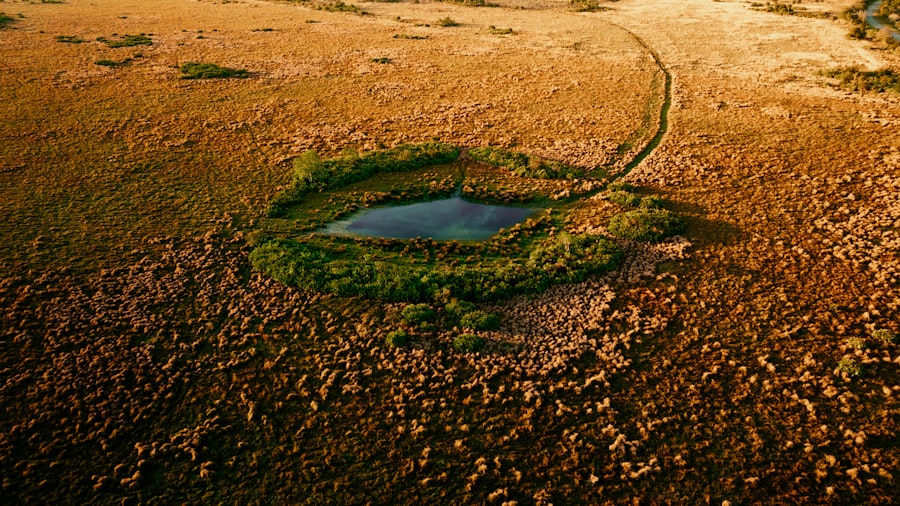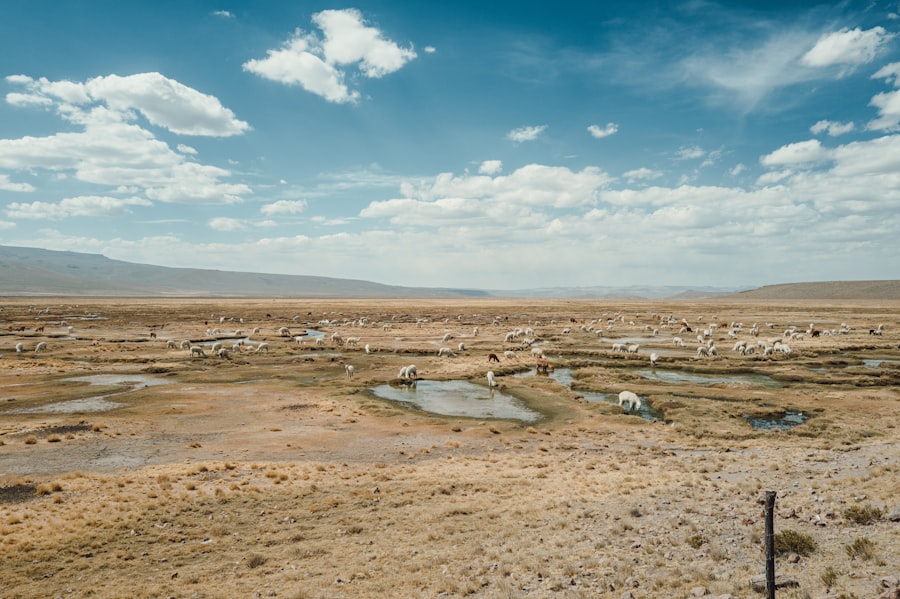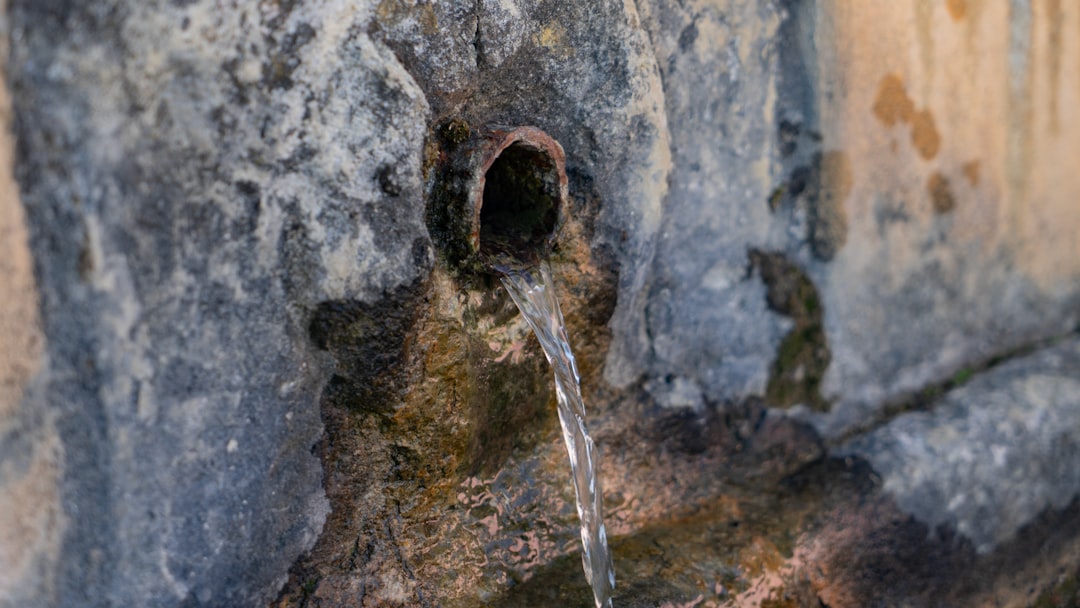The Ogallala Aquifer, one of the largest aquifers in the world, stretches across eight states in the United States, including South Dakota, Nebraska, Wyoming, Colorado, Kansas, Oklahoma, New Mexico, and Texas. This vast underground reservoir is a crucial source of freshwater, providing irrigation for millions of acres of farmland and drinking water for countless communities. The aquifer is primarily composed of porous rock and sediment, which allows it to store vast quantities of water.
Its significance cannot be overstated, as it supports a substantial portion of the nation’s agricultural output and plays a vital role in the economy of the Great Plains region. As the demand for water continues to rise due to population growth and agricultural needs, the Ogallala Aquifer faces unprecedented pressure. The delicate balance between water extraction and replenishment has become increasingly precarious.
Understanding the history, current status, and future challenges of the Ogallala Aquifer is essential for ensuring its sustainability. This article delves into the aquifer’s historical context, its current condition, the factors contributing to its depletion, and the potential solutions that could help mitigate this pressing issue.
Key Takeaways
- The Ogallala Aquifer is a vital underground water source in the United States, providing water for agriculture and communities in the Great Plains region.
- Over the years, the Ogallala Aquifer has been heavily relied upon for irrigation and drinking water, leading to concerns about its depletion and long-term sustainability.
- The current status of the Ogallala Aquifer shows significant depletion due to over-extraction and limited recharge, posing a threat to agriculture and the economy in the region.
- Factors contributing to the depletion of the Ogallala Aquifer include increased water demand, inefficient irrigation practices, and climate change impacts on precipitation patterns.
- The depletion of the Ogallala Aquifer has a profound impact on agriculture and the economy, leading to reduced crop yields, land subsidence, and economic instability in the region.
History of the Ogallala Aquifer and its Importance
The history of the Ogallala Aquifer dates back thousands of years, with its formation occurring during the last Ice Age. As glaciers melted, they deposited sediments that eventually became the aquifer’s foundation. However, it was not until the late 19th and early 20th centuries that significant extraction began.
The advent of modern irrigation techniques and the expansion of agriculture in the Great Plains transformed the region into one of the most productive agricultural areas in the United States. The aquifer became a lifeline for farmers, enabling them to cultivate crops in an otherwise arid landscape. The importance of the Ogallala Aquifer extends beyond agriculture; it also supports local economies and communities.
The water extracted from this aquifer has facilitated the growth of towns and cities across the Great Plains, providing essential resources for drinking water and industrial use. As a result, the aquifer has played a pivotal role in shaping the social and economic fabric of the region. However, this reliance on a finite resource has led to concerns about sustainability and long-term viability.
Current Status of the Ogallala Aquifer

As of 2023, the Ogallala Aquifer is facing significant challenges due to over-extraction and insufficient recharge rates. Studies indicate that large portions of the aquifer have experienced alarming declines in water levels, with some areas losing up to 50% of their original water content. This depletion is particularly pronounced in regions where agricultural practices heavily rely on irrigation.
The consequences of this decline are far-reaching, affecting not only farmers but also local economies and ecosystems. Efforts to monitor and assess the aquifer’s status have revealed a complex picture. While some areas have implemented conservation measures that have shown promise in slowing depletion rates, others continue to experience rapid declines.
The variability in water levels across different states highlights the need for a coordinated approach to management and conservation. Without immediate action, the future of the Ogallala Aquifer remains uncertain, raising concerns about its ability to sustain agricultural production and support local communities.
Factors Contributing to the Depletion of the Ogallala Aquifer
| Factor | Contribution to Depletion |
|---|---|
| Excessive groundwater pumping | Overuse of water for agriculture and municipal purposes |
| Climate change | Changes in precipitation patterns leading to reduced recharge |
| Population growth | Increased demand for water resources |
| Industrial activities | Extraction of water for industrial processes |
| Land use changes | Conversion of natural landscapes to urban or agricultural areas |
Several factors contribute to the ongoing depletion of the Ogallala Aquifer, with agricultural practices being at the forefront. The region’s reliance on irrigation for crop production has led to excessive water extraction, often exceeding natural recharge rates. Farmers have historically prioritized short-term yields over long-term sustainability, resulting in a culture of overuse that has become ingrained in agricultural practices.
In addition to agricultural demands, climate change poses a significant threat to the aquifer’s health. Altered precipitation patterns and increased temperatures can exacerbate water scarcity issues, further straining an already stressed resource.
Furthermore, population growth in surrounding areas increases demand for water for domestic use, adding another layer of complexity to an already critical situation.
Impact of Depletion on Agriculture and Economy
The depletion of the Ogallala Aquifer has profound implications for agriculture in the Great Plains region. As water levels decline, farmers face increasing challenges in maintaining crop yields. Many rely on irrigation from the aquifer to grow staple crops such as corn and wheat; without sufficient water supply, these crops become vulnerable to drought conditions.
This vulnerability not only threatens food security but also jeopardizes farmers’ livelihoods and economic stability. The economic ramifications extend beyond individual farms; entire communities depend on agriculture as a primary source of income. As crop yields decline due to water scarcity, local economies suffer from reduced agricultural output and job losses.
The ripple effects can be felt throughout various sectors, including retail and services that cater to agricultural workers. Consequently, addressing the depletion of the Ogallala Aquifer is not merely an environmental concern; it is a pressing economic issue that requires immediate attention.
Environmental Consequences of Ogallala Aquifer Depletion

The environmental consequences of depleting the Ogallala Aquifer are significant and multifaceted. As water levels drop, ecosystems that rely on groundwater are adversely affected. Wetlands and streams that depend on aquifer discharge may dry up or experience reduced flow, leading to habitat loss for various plant and animal species.
This disruption can result in decreased biodiversity and altered ecological dynamics within these environments. Moreover, declining water levels can lead to increased salinity in soils as minerals are concentrated due to reduced moisture availability. This salinization can further degrade soil health and fertility, making it increasingly difficult for farmers to grow crops sustainably.
The interplay between groundwater depletion and environmental health underscores the urgent need for comprehensive management strategies that consider both agricultural needs and ecological integrity.
Efforts to Conserve and Manage the Ogallala Aquifer
In response to growing concerns about depletion, various efforts have been initiated to conserve and manage the Ogallala Aquifer effectively. Many states have implemented programs aimed at promoting sustainable agricultural practices that reduce water usage while maintaining productivity. These initiatives often include incentives for farmers who adopt efficient irrigation technologies or engage in crop rotation practices that enhance soil health.
Additionally, educational campaigns have been launched to raise awareness about the importance of conserving groundwater resources among farmers and local communities. By fostering a culture of conservation and encouraging responsible water use, these efforts aim to create a more sustainable future for the Ogallala Aquifer. Collaborative approaches involving stakeholders from agriculture, government agencies, and environmental organizations are essential for developing comprehensive strategies that address both immediate needs and long-term sustainability.
Potential Solutions to Address the Depletion Crisis
Addressing the depletion crisis facing the Ogallala Aquifer requires innovative solutions that balance agricultural demands with sustainable practices. One potential solution involves investing in advanced irrigation technologies that optimize water usage while maximizing crop yields. Precision agriculture techniques can help farmers monitor soil moisture levels more accurately, allowing them to apply water only when necessary.
Another promising approach is promoting alternative cropping systems that require less water or are more resilient to drought conditions. For instance, farmers could explore planting drought-resistant crops or implementing cover cropping strategies that enhance soil moisture retention. Additionally, enhancing recharge efforts through managed aquifer recharge projects can help restore depleted areas by capturing surface water during periods of excess rainfall.
The Role of Government and Policy in Managing the Ogallala Aquifer
Government policy plays a crucial role in managing the Ogallala Aquifer effectively. State governments have implemented various regulations aimed at controlling groundwater extraction rates and promoting sustainable practices among farmers. These policies often involve setting limits on water withdrawals or establishing conservation districts that oversee local management efforts.
Moreover, federal support through programs such as the Conservation Reserve Program (CRP) provides financial incentives for landowners who engage in practices that protect water resources. Collaborative efforts between federal and state agencies can enhance data collection and monitoring efforts, ensuring that policymakers have access to accurate information regarding aquifer health. Ultimately, effective governance is essential for balancing competing interests while safeguarding this vital resource for future generations.
The Future of the Ogallala Aquifer and Potential Scenarios
The future of the Ogallala Aquifer hinges on collective action taken today to address its depletion crisis. If current trends continue without intervention, projections indicate that significant portions of the aquifer could become economically unviable for irrigation within a few decades. This scenario would not only threaten agricultural productivity but also disrupt local economies reliant on farming.
Conversely, proactive measures aimed at conservation and sustainable management could lead to a more optimistic future for the aquifer. By embracing innovative technologies and practices while fostering collaboration among stakeholders, it may be possible to stabilize water levels and ensure long-term viability. The choices made today will shape not only the future of agriculture in the Great Plains but also the overall health of ecosystems dependent on this critical resource.
The Urgency of Addressing the Depletion of the Ogallala Aquifer
The urgency surrounding the depletion of the Ogallala Aquifer cannot be overstated. As one of America’s most vital freshwater resources, its sustainability is essential for agriculture, local economies, and environmental health in the Great Plains region. The challenges posed by over-extraction, climate change, and population growth necessitate immediate action from all stakeholders involved.
By prioritizing conservation efforts, investing in innovative technologies, and implementing effective policies, there is hope for reversing current trends of depletion. The future of the Ogallala Aquifer depends on collective responsibility—farmers, policymakers, communities, and environmental advocates must work together to ensure this invaluable resource remains viable for generations to come. Addressing this crisis is not just an environmental imperative; it is a moral obligation to protect both people and ecosystems that rely on this precious source of life-giving water.
The Ogallala Aquifer, a crucial water source for agriculture in the central United States, is facing significant depletion due to over-extraction and insufficient recharge rates. This depletion poses a serious threat to the sustainability of farming practices and the overall water supply in the region. For a deeper understanding of the implications of this issue and potential solutions, you can explore a related article on the topic by visiting this page. This article provides insights into the current state of the aquifer and discusses strategies that could help mitigate the depletion and ensure a more sustainable future for the communities that rely on it.
WATCH NOW! Why America’s Heartland Is Disappearing Fast
FAQs
What is the Ogallala Aquifer?
The Ogallala Aquifer is a vast underground reservoir located beneath the Great Plains of the United States. It is one of the largest aquifers in the world and provides water for agricultural, industrial, and domestic use in the region.
What is Ogallala Aquifer depletion?
Ogallala Aquifer depletion refers to the gradual reduction of the water levels in the aquifer due to excessive pumping for irrigation and other purposes. This depletion has raised concerns about the long-term sustainability of water resources in the region.
What are the causes of Ogallala Aquifer depletion?
The primary cause of Ogallala Aquifer depletion is the overuse of water for agricultural irrigation. Additionally, factors such as climate change, drought, and increasing water demand have contributed to the depletion of the aquifer.
What are the consequences of Ogallala Aquifer depletion?
The consequences of Ogallala Aquifer depletion include reduced water availability for agriculture, increased energy costs for pumping water from deeper levels, land subsidence, and potential long-term impacts on the region’s economy and environment.
What are the efforts to address Ogallala Aquifer depletion?
Efforts to address Ogallala Aquifer depletion include water conservation measures, improved irrigation techniques, groundwater management policies, and research into alternative water sources. Collaboration between stakeholders and the implementation of sustainable water management practices are also key components of addressing the issue.
